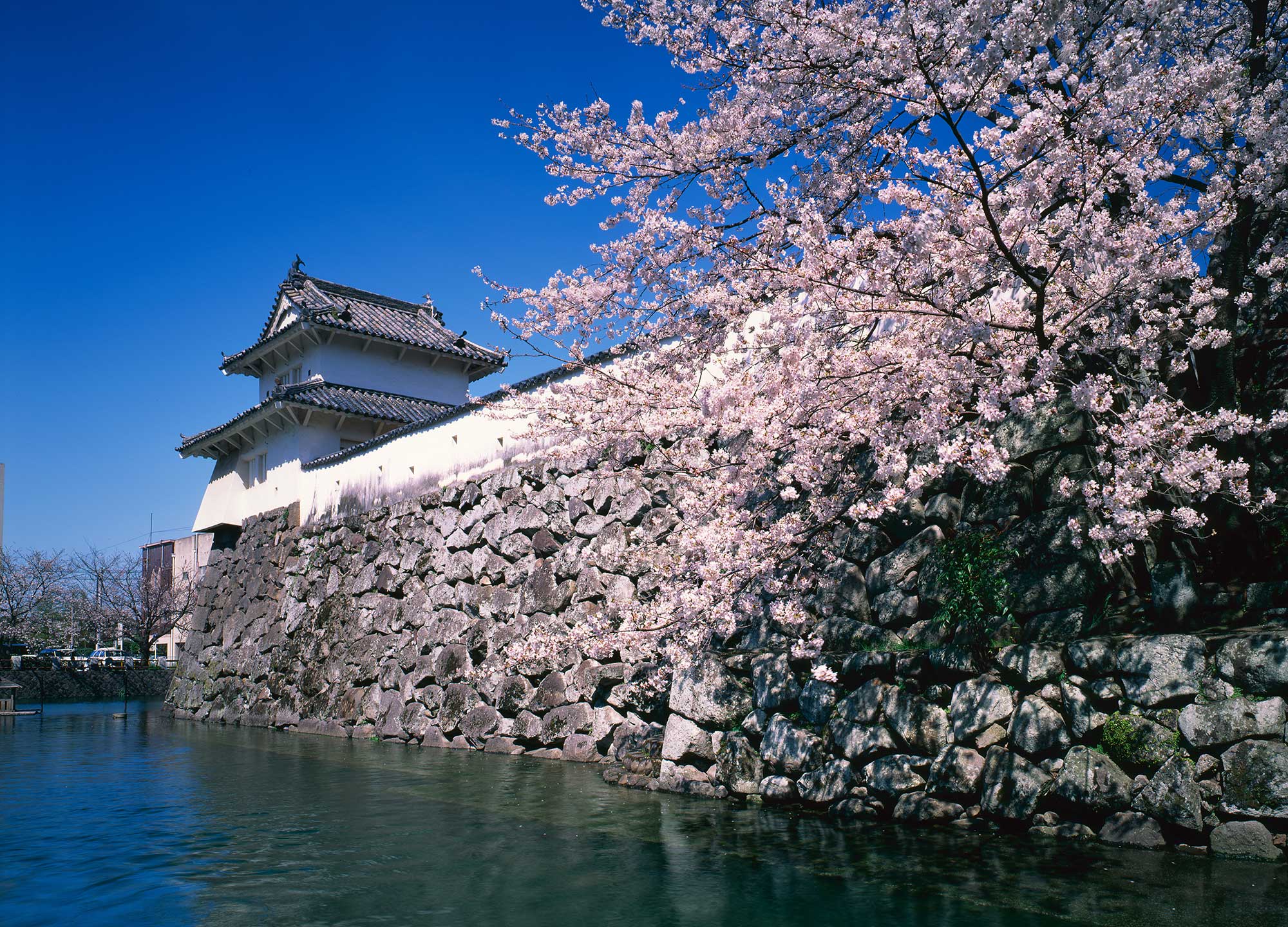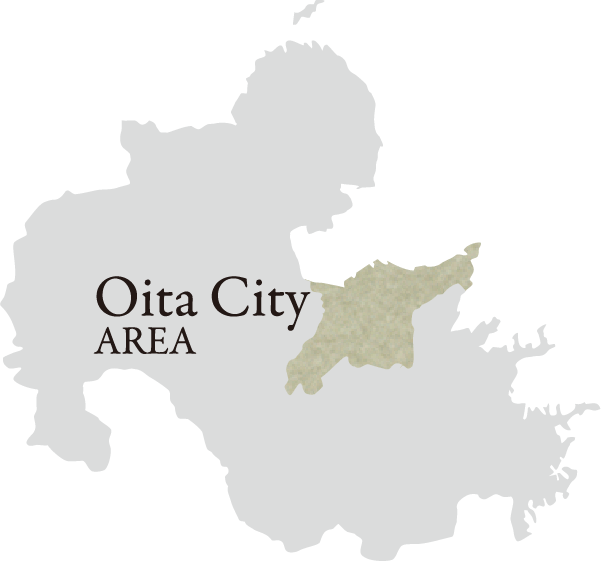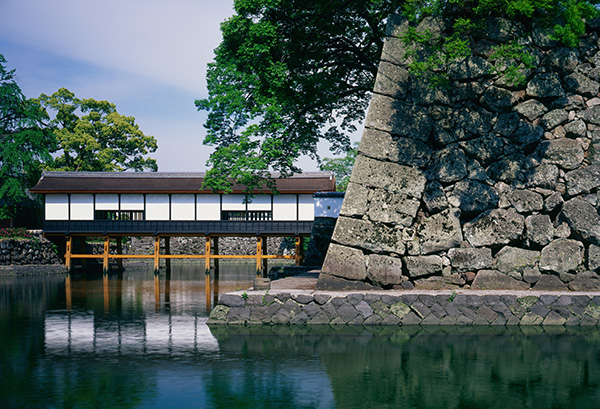

- City of Oita
- Ruins・Ruined Castle
Oita Joushi Park
Photography/TAKEUCHI Yasunori
the Vibrant Spring Party
The cherry blossoms and the castle ruins look beautiful together. Is this because of what we, Japanese people, think of “castles” and our attachment with cherry blossoms link to each other? Thanks to this, Hanami (cherry-viewing parties) are held everywhere at the castle ruins, not only “Kourou no Utage (famous lyrics from “Koujou no Tsuki” by Rentarou Taki, meaning a banquet around the tall cherry tree at the main building of the castle).” Oita Joushi Park (Ruins of Funai Castle) is particularly crowded with people, as it is located downtown.
After the Otomo clan left Bungo, Naotaka Fukuhara entered Funai in 1597. He determined the new castle to be built at the place called Niraku, near the mouth of Oita River then, where the goods shipped by the sea freight were unloaded. The foundation was completed after two years, which he named it Niage Castle as he did not like the character “raku” in Niraku (means “to fall.”)
However, soon his castle was taken away for punishment and Naotaka was moved to Usuki, and Nagatoshi Hayakawa, followed by Shigetoshi Takenaka, took over the clan. The Takenaka clan conducted a major renovation of the castle, creating a four-tiered castle tower, various turrets, Yamazato Guruwa (classic decorative aspects of a castle, a lot with tea rooms and gardens), and inner moat, and revised its name to Funai Castle. He also took on the establishment of the castle town, creating what became the central districts of the current City of Oita. It was complete in 1607.
Since then, the Matsudaira clan resided in the castle following Yoshiaki Hineno, after which came the modern era. Over the course of time, a lot of buildings including the castle tower were lost due to fire and earthquake, and the castle tower was never reconstructed. Furthermore, the prefectural office was placed after the order of destruction of all castles in the Meiji era, and turrets were burnt in the World War II.
What remains now are the Soumon Yagura (turret), Hitojichi Sanbante Yagura, and the walls on three sides. The Otemon Gate has been restored, and the Oita Bunka Kaikan (Oita Cultural Hall, closed in 2013) was established after the Prefectural Office had relocated. A covered bridge connecting with Yamazato Guruwa was built and the area has been maintained as a park. It is a historical site of the prefecture. Also selected as one of “Japan’s Top 100 Castles.”

Listed as one of “Japan’s Top 100 Castles.” What remains now are the Soumon Yagura (turret), Hitojichi Sanbante Yagura, and the walls on three sides. Otemon gate has been restored and maintained as a park.

